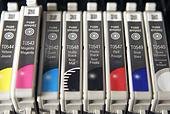There are many reasons to let geeks work the way they want to work. Today they work in every industry. They are the knowledge base, blood and sweat equity of many businesses. They work harder than most. They work longer than most. Their job isn’t a separate “thing they do” while they look forward to going home and relaxing. Geeks *live* what they do. They eat, sleep and breathe it. They are your systems administrators, your IT team, your programmers, your web developers, your designers… and sometimes even your customer service and sales people.
Anyone who understands how to leverage todays technology to increase intelligence, productivity and efficiency; anyone who stays up nights working to get better at what they do; anyone whose job is their life - is a geek. These are the most important asset your company has. For this reason, its important to give geeks what they want. Best part is, if you do, they most likely will not leave your company to work for someone who will.
#1. Let them work when they wantGeeks work almost every moment they are awake. They are online before they go to the office. They are home working after the office closes. They work weekends. They are even sometimes working in their dreams. Employers should understand this and more importantly appreciate it. Don’t force geeks to work 8 - 5 if there is no real need other than “company morale.” Meetings are one thing (, so is socializing with coworkers, but a relaxed office schedule will do wonders for the contentment levels of your employed geeks.
#2. Let them work where they wantGeeks prefer to have a couch around to nap on if they are tired. Some like no windows, others want to stare out into a city or landscape. At home, geek’s offices are usually more lived in, more comfortable and enjoyable than anywhere else in the world. This is because they love what they do, and they do it so much of the time they need to be comfortable where they do it.
#3. Let them control their lightingThere is nothing more annoying than working in bright crappy fluorescent lighting if you prefer to work in the dark, or vice versa. Geeks usually have sensitive eyes from staring at CRT monitors for too long. The last thing you want is your geeks to have headaches. Most geeks aren’t very pleasant to work with when they have headaches.
#4. Let them wear headphonesGeeks are experts in the arts of “focus.” Focusing takes removing all unnecessary distractions from your environment and creating a state where nothing else is going on but what they are working on. The harder the problem they are trying to solve or the more creative they have to be, the more they need to focus. Headphones, or simply a lack of ringing phones and talking sales people allow geeks to focus much easier.
#5. Do not expect them to wear a suitGeeks find arbitrary activities that lack real and meaningful purpose, a waste of time and energy. This includes attire. Most companies today are aware of this and even practice casual dress so as to make everyone more comfortable, but geeks are a special case. “Suits” (the kind of person) usually represent a business man who lacks most things other than a nice smile and great negotiation skills.
#6. Do not make them participate in company events (unless you are sure it is geek-friendly)Most geeks will not be jumping up and down with joy to attend a company party to celebrate the local football team, unless of course there is beer, and they can hang around and talk to each other about geeky things. Keep this in mind when planning company events. Geeks like to have fun, just not the same kind of fun as your typical non-geek.
#7. Do not hold a lot of arbitrary meetings that could have otherwise been handled through email or IMThis one is important. Like I said, geeks need to focus to be happy and able to focus. Nothing is more of an interruption than someone walking into their space unexpectedly and saying “hey do you have a minute?” The answer is usually going to be a disgruntled “Sure.” The truth is geeks are fine with attending planned meetings (and will happily be there if the meeting is really a necessary one for them to attend in person), but are usually most happy communicating through email and IM. These forms of communication are most appealing to geeks because they do not interrupt you, and polite geeks will even respond with a quick “hold on a sec, I’m in the middle of something.” Email and IM are recorded, searchable records of conversations. They are efficient and to the point. This also makes geeks happy. Geeks can discuss anything through email and IM and will usually be more willing and thorough with their response. Face to face meetings are important, geeks know that, but I would guess that 90% of conversations and meetings held face to face, would be more efficient and end with happier people, if they were held in a recordable, written, virtual space.
#8. Do not make them do anything other than workThis one isn’t completely accurate all the time. Geeks are team players, but they are also easily insulted by being given a task below their level of expertise or outside of the scope of their position. They’ll do it, but they won’t be totally happy. This includes: answering phones, taking out trash, going shopping for company supplies, and “filling in” for a sales person.

 Printing colored pictures on a home computer consumes the maximum amount of ink.
Printing colored pictures on a home computer consumes the maximum amount of ink.


